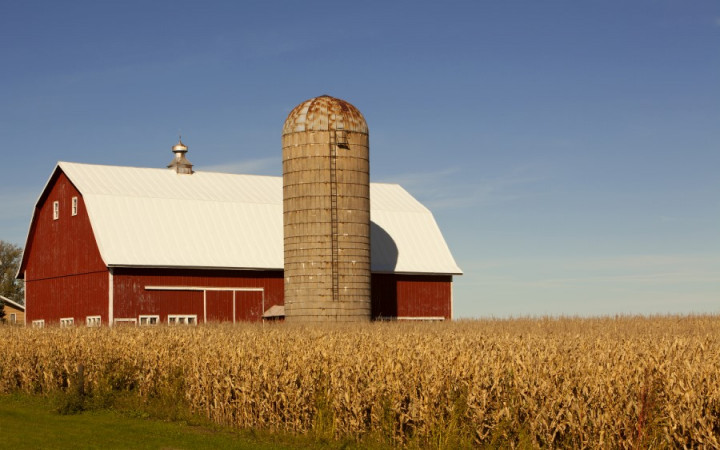Today’s Wonder of the Day was inspired by Heather. Heather Wonders, “Why are barns red?” Thanks for WONDERing with us, Heather!
Do you like to go for peaceful drives in the country? It can be so relaxing to wind around lonely gravel roads, listening to the sounds of nature and taking in sights you don't see every day.
What kinds of things do you like to see when you go exploring in rural areas? For some, the sight of cows and other farm animals in the fields is a delight. For others, rustic old barns take them back to a time long ago when they were young.
As you travel rural routes, old barns are a common sight. Standing tall against the backdrop of the fields, old barns evoke memories of the earliest days of farming. They take us back to a time before machines became such an important part of our world.
If you watch closely as you explore the countryside, you'll notice that many old barns have something in common: their color. While barns can and do come in a variety of colors, there's one color that you'll find more often than any other: red.
Today, many barns are painted red as a form of tradition. A farmer who builds a new will often paint it " red" to make it look like the red barns of the past. So just how did this longstanding tradition of red barns come to be?
The first barns built in America weren't red. In fact, they weren't painted at all. The early farmers who settled New England didn't have extra time or money to spend on painting their barns. Over time, however, harsh weather took its toll, barns and requiring repairs. As a result, farmers began to look for ways to protect their barns from the elements.
Farmers began to treat their wooden barns with linseed oil, a natural sealant made from the seeds of the flax plant. To create a durable coating that would dry and harden quickly, farmers added milk and lime to the linseed oil.
To protect against mold and moss, which would grow on barns and increase decay by trapping moisture in the wood, farmers would also add iron oxide to their linseed oil paint mixture. Iron oxide, also more commonly known as rust, was plentiful on farms and, when mixed into a paint mixture, provided added protection to barns.
The homemade paint made by combining linseed oil, milk, lime, and rust produced a sturdy paint that dried to a dark orange or burnt red color. Since many farm houses were white, red barns stood out in stark contrast and soon became quite fashionable.
Over time, better paints became available. Even when they no longer had to make their own homemade paints out of cheap and readily-available materials, however, many farmers chose to continue the tradition of painting their barns red.




